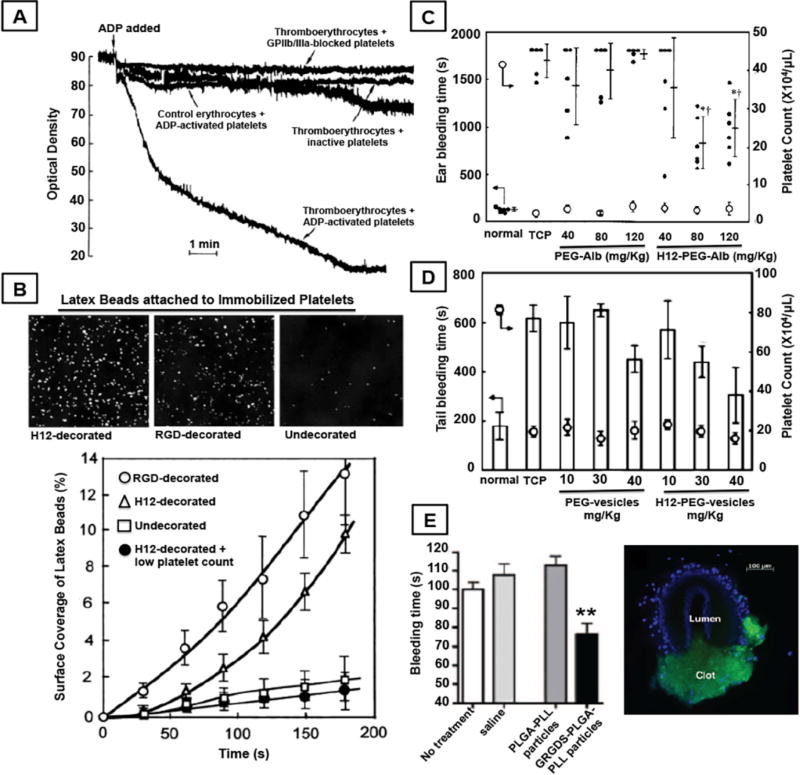Figure 13.
Selected results from studies carried out with various particle platforms surface-decorated with fibrinogen-relevant RGD or H12 peptides to mimic platelet aggregation mechanism. 13A shows platelet aggregometry studies with RGD-decorated RBCs (Thromboerythrocytes), where unmodified control erythrocytes were unable to enhance aggregation of ADP-activated platelets and Thromboerythrocytes were unable to enhance aggregation of inactive platelets or integrin GPIIb-IIIa-blocked platelets, but they could significantly enhance the aggregation of ADP-activated platelets, thereby mimicking fibrinogen and GPIIb-IIIa mediated platelet aggregation mechanism; 13B shows representative fluorescent images as well as quantitative surface-coverage data of H12 peptide-decorated, or RGD peptide-decorated or undecorated fluorescently-labeled latex beads suspended in reconstituted blood and flowed over platelet-immobilized surfaces, indicating the enhanced GPIIb-IIIa-binding capability of H12-decorated and RGD-decorated beads to platelets; 13C shows the capability of H12-decorated PEGylated albumin particles (H12-PEG-Alb) to significantly reduce ear punch bleeding time upon intravenous administration in thrombocytopenic rabbits, compared to administration of control undecorated PEG-albumin (PEG-Alb) particles; 13D shows the capability of H12-decorated PEGylated liposomal vesicles (H12-PEG-vesicles) to significantly reduce tail bleeding time in thrombocytopenic rats, compared to administration of control undecorated PEG-vesicles; 13E shows quantitative bleeding time reduction data and representative fluorescence image of hemostasized vessel, where administration of RGD-decorated polymeric nanoparticles (GRGDS-PLGA-PLL particles) significantly reduced bleeding time in a rat femoral artery injury model, compared to undecorated particles or saline. Figure components adapted and reproduced with permission.[424,425,426,431,432] Copyright 1992, American Society for Clinical Investigation; 2003, Elsevier; 2008, John Wiley & Sons Inc.; 2005, American Chemical Society and 2009, AAAS.

